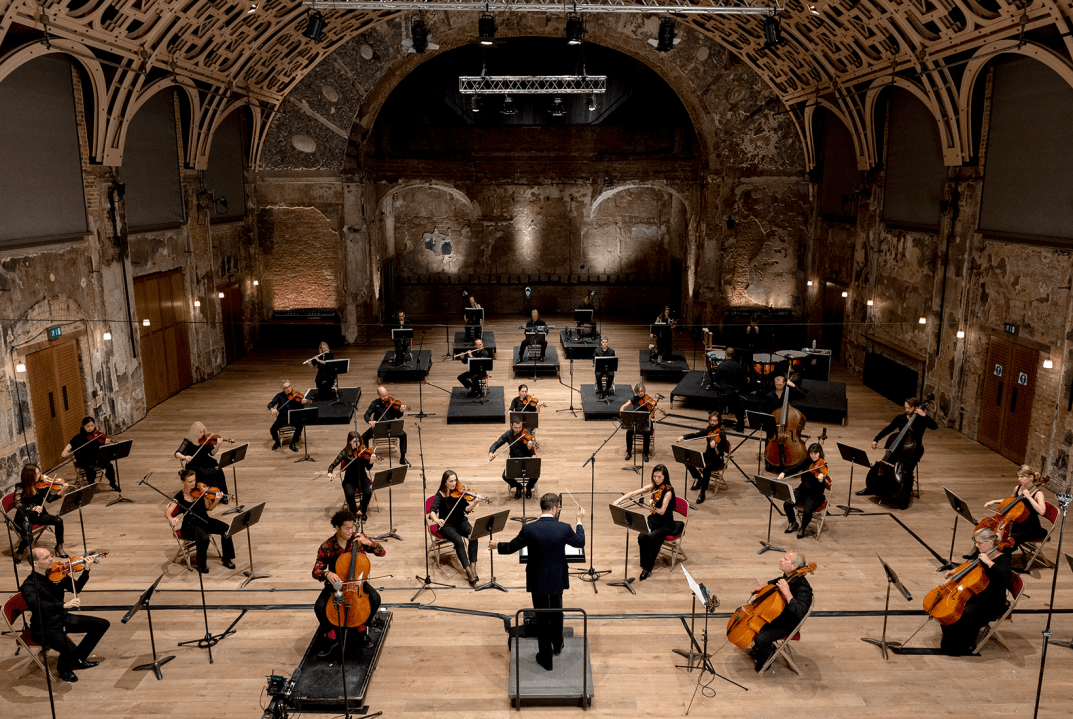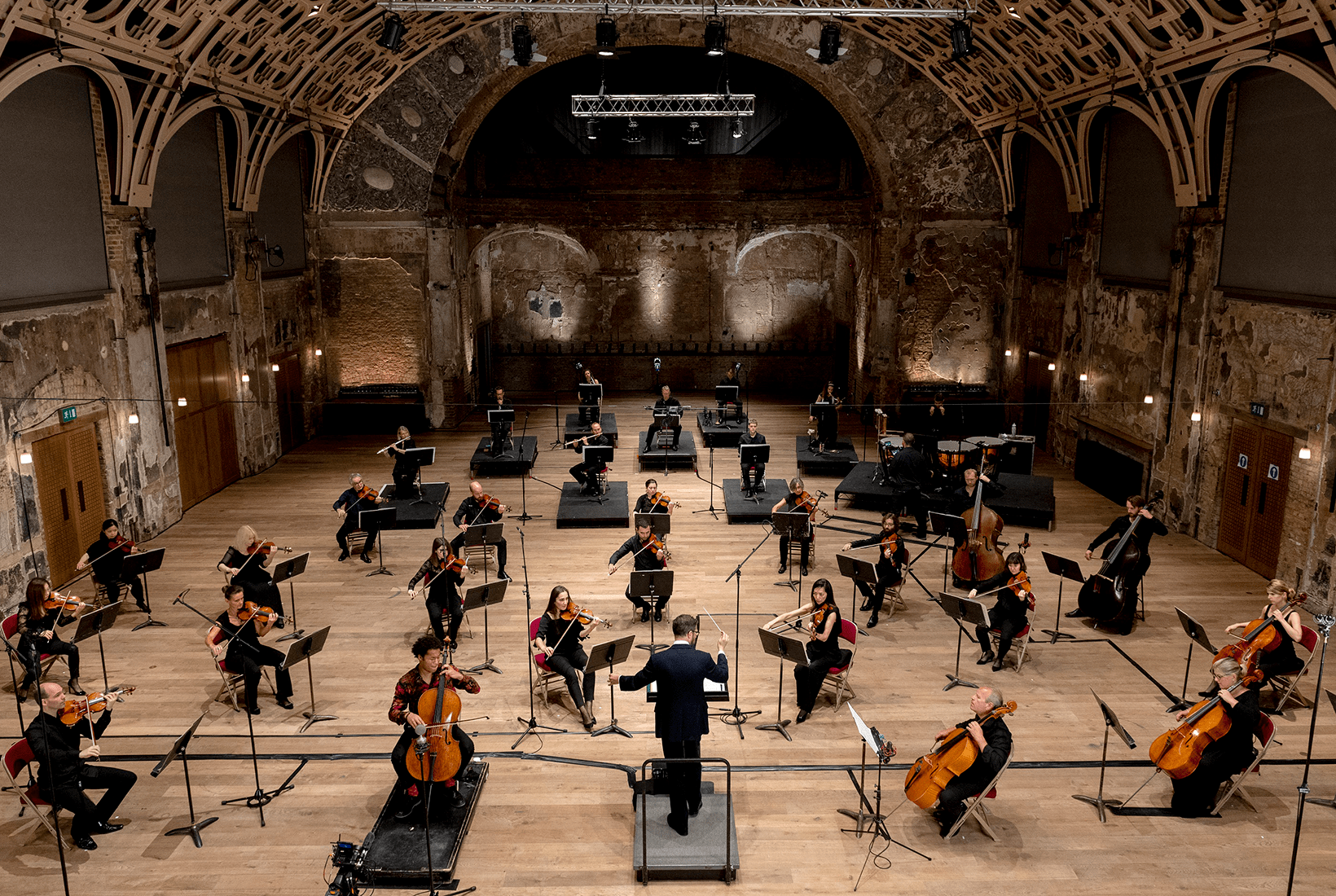First there were the home recitals: musicians playing solo Bach in front of their bookshelves, wonkily captured on iPhones. Next came the Zoom ensembles, and near-infinite quantities of editing time and digital processing power achieved what, for a millennium up until March this year, could be produced instantaneously by putting some musicians in the same room. In June, we had live chamber music relays from empty concert halls. And now, after what might be the longest enforced break many orchestras will ever have taken, we have socially distanced online symphonic concerts: the latest, and let’s hope final, manifestation of this godawful New Normal (you’ll know we’re back to the Old Normal once critics start complaining about grey-haired audiences again).
This particular Covidcast came from the Philharmonia, and the main work was Vaughan Williams’s Fantasia on a Theme by Thomas Tallis: in the words of the conductor, John Wilson, ‘the original socially distanced piece’. He’s not wrong. The Tallis Fantasia is that most British of things, a modernist trailblazer that we’ve persuaded ourselves is a piece of cosy pastoralism. A good performance of the Fantasia needs to rewild it to restore some of the astonishment of the original 1910 audience at this ‘queer, mad work by an odd fellow from Chelsea’.
Art tackles social distance and for once, actually wins. It’s practically chamber music
Wilson and the Philharmonia were just across the river at Battersea Arts Centre, where a scaled-down orchestra (around half the string players were absent) was scattered across the floor of the hall. The Fantasia’s strangeness became its strength. Vaughan Williams splits his orchestra into two spatially separated ensembles, and places his phrases and silences in such a way that they simply have to be given space to breathe.
It was a particularly smart idea to book Wilson — a conductor without side or ego who knows how to transfigure the sound of a string section, whether the shimmering, May-mist luminosity of Vaughan Williams’s opening chords or the eerily cool, layered sound he drew from the second orchestra, like the fading ghost of some ancient reed-organ.
You can ask Wilson how he makes the music sound this beautiful, and he’ll tell you something technical about the amount of bow-hair that players place on strings, or the importance of a precise beat. You won’t get much out of the cellist Sheku Kanneh-Mason, either. However well you might think you have the measure of Kanneh–Mason (and for my money, the fuss that’s surrounded him since he won BBC Young Musician in 2016 is largely justified), the truth is that he’s still a student, and his emerging musical personality is infinitely more interesting than the media narrative might lead you to expect. Press releases, being press releases, have compared him to Jacqueline du Pré. Actually, his sound — wide-grained, sweet, unaffectedly articulate — has more in common with the cellists of Vaughan Williams’s era: players like Beatrice Harrison, who duetted with a nightingale and whom Kanneh-Mason has confessed to admiring.
Anyway, he was the soloist with Wilson and the Philharmonia in the first half of this online concert. They played Saint-Saëns’ First Cello Concerto, and if you’re sceptical about either artist, my advice is to listen and then see if you don’t think this is as lovable and as eloquent a performance as you’ve ever heard. Art tackles social distance and for once, actually wins. It’s practically chamber music. Then click on the donation link and bung the Philharmonia a few quid because believe me, they need it.
The BBC, meanwhile, relocated its series of live lunchtime recitals to City Halls, Glasgow. There’s still no audience, and if these excellent concerts failed to generate the social media buzz that they did at the Wigmore Hall in June, one might perhaps see that as a harbinger of returning normality. The bass-baritone Michael Mofidian and pianist Julia Lynch performed songs by Tchaikovsky, Ravel and Vaughan Williams, and as with most radio song recitals, about 20 per cent of the words (even the English ones) were comprehensible. Still, you could certainly enjoy the sound the performers made — soaring, rich and expansive, making the most of the empty hall.
On Friday the percussionist Colin Currie took the same slot, and like Wilson, he’s a sonic conjuror. A solo vibraphone passage from Per Norgard’s I Ching was alternately mellow and piercing, sometimes within the same note. But in a programme that included music by Kevin Volans, Toshio Hosokawa and Bryce Dessner, a little post-minimalist pattern-making went a long way. In the middle of it all, a flaring, iridescent nebula of unconstrained imagination, was Vibra–Elufa, a study from Stockhausen’s Licht. Stockhausen, famously, came from the Sirius star-system, which spares me the embarrassment of suggesting, in the summer of 2020, that some of the best stuff out there really is — still — the work of mad, dead German males.







Comments